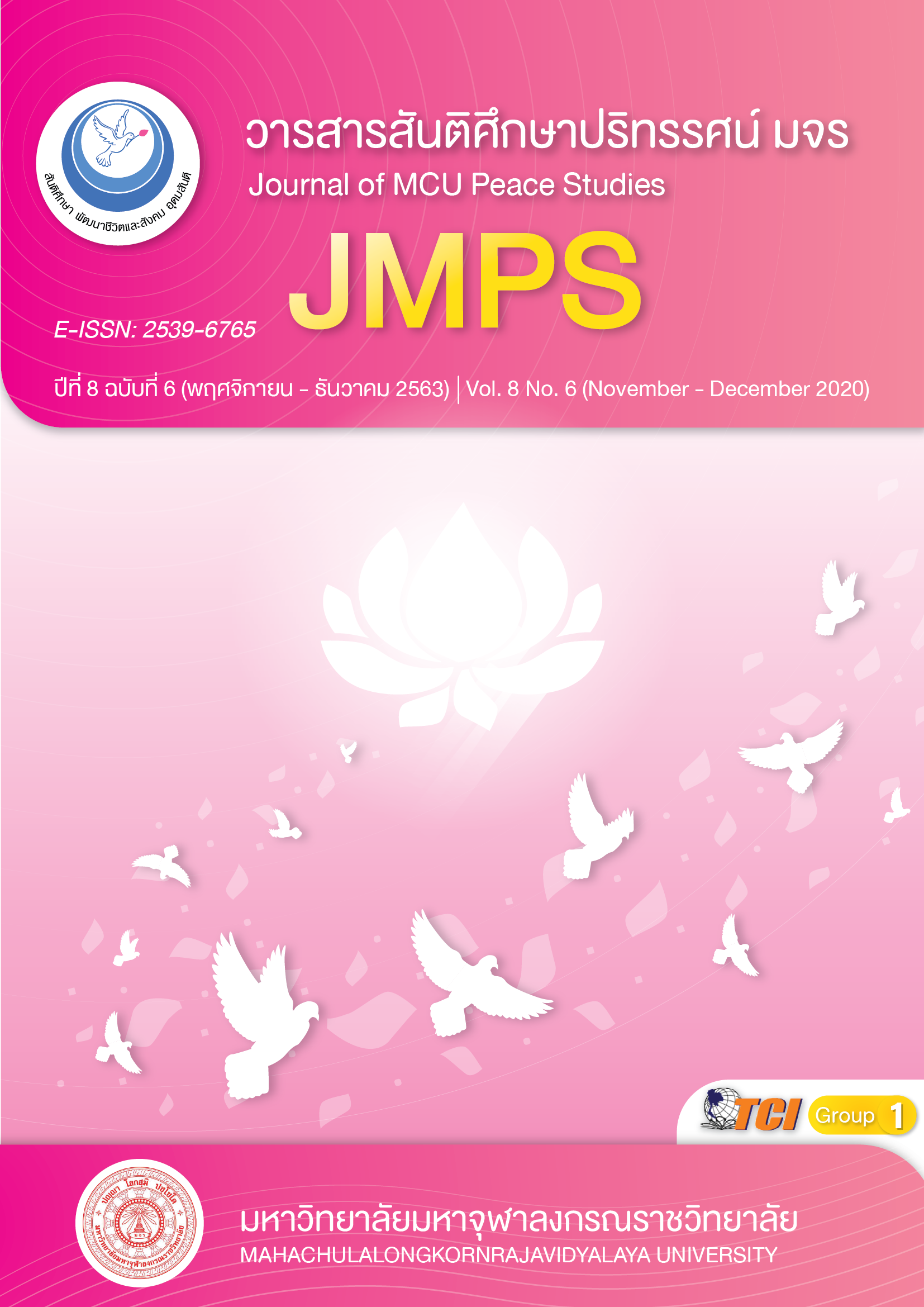การรับและส่งต่อเนื้อหารายการวิทยุของเยาวชนยุค 4.0
Main Article Content
บทคัดย่อ
บทความวิจัยนี้มีวัตถุประสงค์เพื่อศึกษาการรับและส่งต่อเนื้อหารายการวิทยุของเยาวชนในยุค 4.0 ดำเนินงานวิจัยเชิงคุณภาพตามแนวคิดปรากฏการณ์นิยม(phenomenology) กลุ่มตัวอย่างเป็นสภาเด็กและเยาวชนประจำตำบลที่มีประสบการณ์จัดรายการวิทยุหรือทำกิจกรรมเชิงสร้างสรรค์เพื่อพัฒนาเยาวชนในเขตพื้นที่ 9 จังหวัดภาคเหนือตอนล่างซึ่งได้มาโดยการคัดเลือกแบบเจาะจงผู้ให้ข้อมูลจังหวัดละ 8 คน รวมจำนวนทั้งสิ้น 72 คน จากประชากรที่เป็นสภาเด็กและเยาวชนประจำตำบล 27 แห่ง ใช้การสนทนากลุ่มเป็นเครื่องมือในการเก็บรวบรวมข้อมูล และทำการวิเคราะห์ข้อมูลโดยการวิเคราะห์เนื้อหา ผลการวิจัยพบว่า 1. เยาวชนในฐานะผู้รับสาร สนใจเนื้อหาที่เป็นข่าวสารและความเป็นจริง ได้แก่ ข่าวท้องถิ่นและข่าวส่วนกลาง เนื้อหาเกี่ยวกับเพศศึกษา และเนื้อหาความรู้เพื่อส่งเสริมทักษะชีวิตในด้านต่าง ๆ ได้แก่ ด้านสังคม ด้านสิ่งแวดล้อม ด้านการศึกษาและวัฒนธรรม ซึ่งเนื้อหาดังกล่าวมีความเกี่ยวข้องกับวิถีชีวิตความเป็นอยู่ของเยาวชนทำให้รู้เท่าทันกระแสสังคม อีกทั้ง เนื้อหาเรื่องเพศยังมีส่วนช่วยให้เยาวชนตระหนักถึงปัญหาและการป้องกันการตั้งครรภ์ในวัยรุ่นได้อีกทางหนึ่ง นอกจากนี้ เยาวชนยังสนใจเนื้อหาที่เป็นความบันเทิง ได้แก่ เรื่องราวสยองขวัญอันน่าตื่นเต้นสนุกสนานจากจินตนาการ และ การรับฟังเพลงทันสมัยที่สร้างความเพลิดเพลินใจได้ 2. เยาวชนในฐานะผู้ส่งสาร มีการส่งต่อเนื้อหารายการเกี่ยวกับการตั้งครรภ์ในวัยรุ่น เนื่องจากเป็นประเด็นปัญหาสังคมที่ได้ขับเคลื่อนร่วมกับเครือข่ายเยาวชน DJ TEEN ทั่วประเทศอยู่ก่อนแล้ว นอกจากนี้ เยาวชนยังได้ส่งต่อเนื้อหาข่าวประชาสัมพันธ์ชุมชนเพื่อสร้างความเข้าใจและสร้างความร่วมมือกัน ทั้งนี้ การเลือกเผยแพร่เนื้อหาดังกล่าวเป็นไปตามผังรายการ แหล่งข้อมูล บทรายการ และเพลงที่สอดคล้องกับความสนใจของคนในชุมชน การสื่อสารในฐานะผู้รับสารและผู้ส่งสารก่อให้เกิดเป็นองค์ความรู้พฤติกรรมการใช้สื่อวิทยุของเยาวชนเพื่อกระตุ้นให้คนในชุมชนมีส่วนร่วมพัฒนาและแก้ปัญหาชุมชน
Article Details
ทัศนะและความคิดเห็นที่ปรากฏในบทความในวารสาร ถือเป็นความรับผิดชอบของผู้เขียนบทความนั้น และไม่ถือเป็นทัศนะและความรับผิดชอบของกองบรรณาธิการ ยินยอมว่าบทความเป็นลิขสิทธิ์ของวารสาร
เอกสารอ้างอิง
Chiawvitkan, K. (2020). Full research report, Formats and Contents of Radio Programs for Youth in the 4.0 era. Faculty of Business, Economics and Communication: Naresuan University.
Chiawvitkan, K., & Khumsuphan, T. (2015). Communication needs of the recipients of the digital native. Business administration journal, 10(1), 112-119.
Department of Children and Youth., & Ministry of Social Development and Human Security.(2018). Guidelines for establishing a juvenile council according to the National Child and Youth Development Act B.E. 2007 and amended (Version 2) B.E. 2560. Retrieved June 29, 2020, from https://dcy.go.th/webnew/upload/knowledge/th 201703081952271.pdf
Khorum District Child and Youth Council in Uttaradit Province. (2020). radio script, February 20.
Nong Sano District Child and Youth Council in Phichit Province. (2020), radio script, February 20.
Maesincee, S. (2016). The role of modern media in Thailand.4.0. Retrieved June 29, 2020, from https://www.isranews.org/main-thairefom/51766-thailand-4-0_51766.html
McLeish, R., & Link, J. (2016). Radio Production. (6th ed.). New York: Focal Press.
Office of the Council of State. (2007). National Child and Youth Development Act 2007. Retrieved June 30, 2020, from http://dcy.go.th/webnew/upload/laws/law_th_20171906155215_1.pdf
Office of the National Economic and Social Development Board. (2016). Economic and Social Development Plan National edition 12 (2017-2021). Retrieved June 29, 2020, from https://www.nesdc.go.th/ewt_dl_link.php?nid=9640
Orlik, P. B. (2016). Media Criticism in a Digital Age Professional and Consumer Considerations. New York: Routledge.
Ratanasimakul, K. (2012). Principles of writing radio and television broadcasts. Bangkok: Publisher of Chulalongkorn University.
Royal Thai Government Gazette. (2013). Announcement of the Broadcasting Commission National television and telecommunications businesses: Rules for Program Schedule for Radio or Television Broadcasting Services 2013. Retrieved June 30, 2020, from http://www.nbtc.go.th/getattachment/Business/
Severin, W.J., & Tankard, J. W. (2010). Communication Theories: Origins, Method, and Uses in the Mass Media. (5th ed.). United States: Pearson.
United Nations. (2013). Definition of Youth. Retrieved June 29, 2020, from https://www.un.org/esa/socdev/documents/youth/fact-sheets/youth-definition.pdf
West, R., & Turner, L.H. (2007). Introducing communication theory analysis and application.(3rd ed.). New York: McGraw-Hill.


